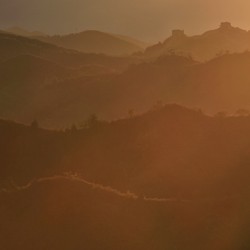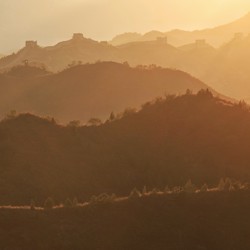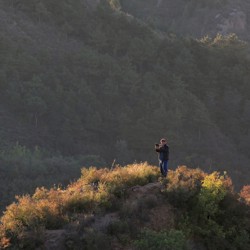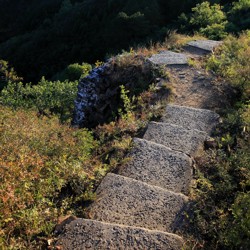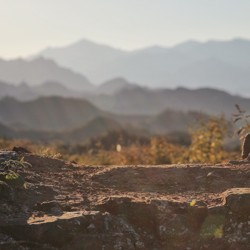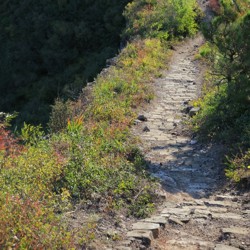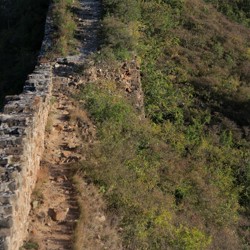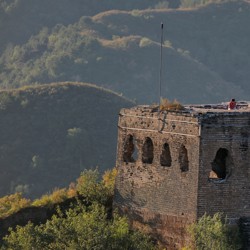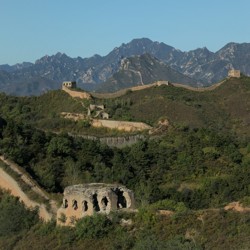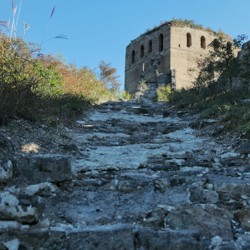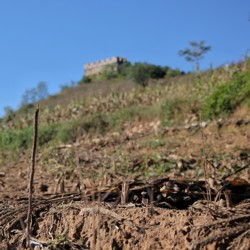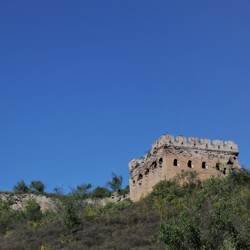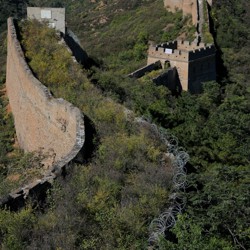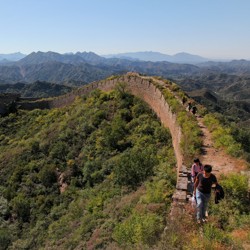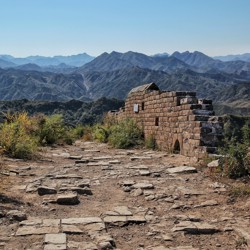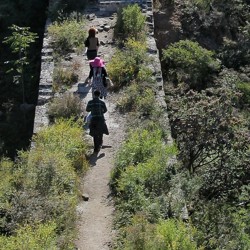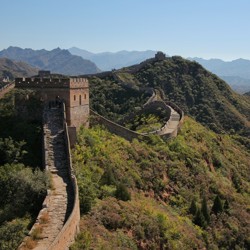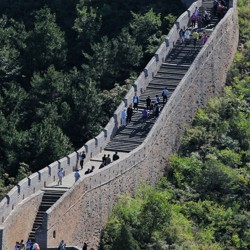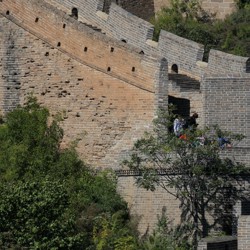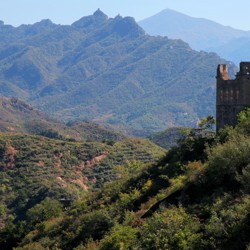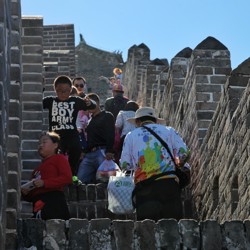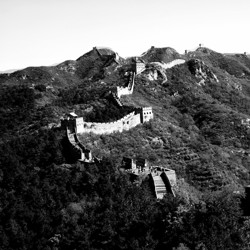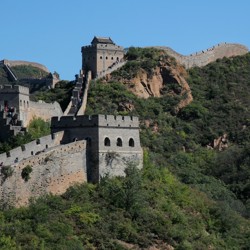03. October 2015
The Great Wall
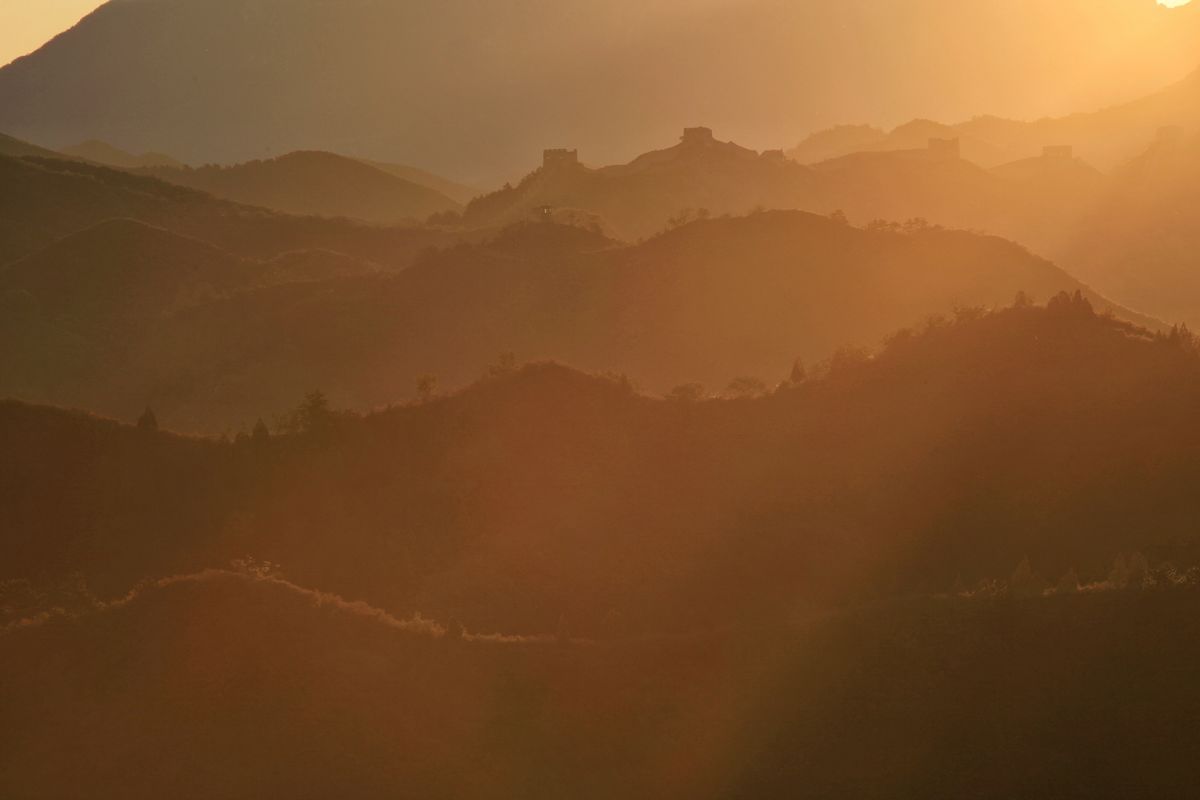
Aah, the famous Great Wall of China. A lot has been written about it, not all of it being correct – like the popular urban legend that it is the only man-made structure visible from space (simply said, it‘s much too thin – the pyramids of Gizeh would e. g. be easier to spot). And actually the Great Wall is also not just one continuos building created by one Chinese emperor. Instead the Great Wall is a network of walls, which has been constructed at different times to ward of attackers. Nonetheless, it is an impressive human feat and definitely worth exploring.
While pieces of the Great Wall can be found in many regions of China, the sections near Běijīng are the most famous ones. Most (Chinese) tourists just flock to Badaling, a very accessible, completely restored part. “Restored“ in the case of the Great Wall fortunately does not mean that it suffered the same fate as many historic old towns in China – being razed and then being rebuilt as a theme park version of the former self. But while Badaling is easy to reach, it always is somewhat crowded and during the Golden Week it might become a nightmare trip (just search for some photos online …). Since I was also not that fond of only seeing the completely restored wall, I set off to explore a not that well known area.
Using the local bus I first went to Mìyún from where the next bus should leave to my destination Gubeikou. After I got off the bus, I was addressed by a local man with an all to obvious scam. He offered me – in surprisingly good English – a minibus ride for an unreasonable price. The regular bus? “There is no bus anymore.“ Of course, after just leaving him and walking outside the station – the bus only halts on the side of the road – I found the correct bus without any trouble. Still the scammer got me a bit worried: scammers can typically be found in touristic places. Had Gubeikou in the last few years become a place that is visited by many more tourists and is now crowded as well?
Fortunately that was not really the case. Although nearly all guesthouses in the village were booked out (the Golden Week …), the total amount of tourists was still limited due to the size of the village. Using my limited knowledge of Chinese I asked around, but couldn‘t find any acceptable deal for a room for the night. Finally, having asked at almost every guesthouse in the village, a young boy addressed me: “Shh, follow me“. Not having much to lose I decided it would be worth a try. He lead me to a building, which was obviously not a guesthouse, but just the home of a normal family – his family. In fact he offered me his own room for the night. An improvised homestay? In my opinion much better than a guesthouse, anyway! We bargained a bit (not too much – I didn‘t want to stress him too much) and agreed on a price. Having solved this problem, the quest for food had to be addressed. Luckily his family ran a very good restaurant and his recommendation for the meal turned out to be terrific and even pretty cheap (including a beer ca. 4 $). A promising start!
There was only one more thing to do that day. Wanting to get up very early in the morning to catch the sunrise on the wall, I hiked up the first few hundred meters in the dark, leaving the restored big gate behind me and walking on the narrow, unrestored path of the oldest parts of the Great Wall – more than 1500 years old. Without anyone else in sight, I enjoyed the unobstructed view on the magnificient landscape showing its silhouette and the night sky, the milky way being clearly visible. Breathing the fresh air I returned to my temporary home, anticipating the next morning already.
The next morning I found the wall almost empty again, having gotten up already at 5:20. Surprisingly I could see a small group of Chinese people some distance away, but otherwise I had this part of the wall all for myself and I enjoyed the silent, calm morning. While it was not perfect for taking photos – some clouds reflecting the light would have been useful – it was an awesome experience.
After packing my stuff again – food, tripod, camera and lenses – I started hiking. My destination was Jīnshānling and according to my guidebook it should take approximately 6 1/2 hours to get there. Shortly afterwards the old, Qi dynasty stretch was replaced by the Ming era brick walls, making the trip much easier and safer – no need anymore to worry about tripping on the one meter wide path and falling down the railless wall!
One might wonder whether hiking on the wall might not be a bit boring after some time, but starting from Gubeikou, the wall slowly starts to unfold itself to the dauntless traveller, always offering new sights. Too bad (or luckily?), only few people seem to get to this part. All in all I met only three small groups during the first hour or so and afterwards I didn‘t meet anyone at all until I reached Jīnshānling.
Unfortunately it is not possible to walk the whole distance just on the wall. Inbetween a military area blocks the route and a detour has to be taken. The nearly completely overgrown path gave another hint that not too many people have chosen this way of exploring the Great Wall. But finally I reached the westernmost part of Jīnshānling and could climb back on the wall.
Here I met the first other tourists after having hiked for hours only seeing a handful of local farmers. So far away from the entrances at the West/East Gates only comparatively few tourists were present and I talked to a few of them. Apparently being of the more adventurous type in general, several of them had already travelled to Europe and therefore spoke some English.
The nearer I got to the gates the denser the tourist crowds became and the wall changed a final time as well: the original brick wall was replaced by the restored version. While in general a bit more boring in my opinion, it at least displayed the otherwise partially crumbled towers in their former glory. A bit exhausted, but otherwise content, I eventually reached the bus back to Běijīng, looking forward to have a long shower.
I ordered the photos for my Great Wall trip so that you may easily follow the path I have taken by placing the oldest photo (so the closest to the start) at the top and ordering them chronologically.
